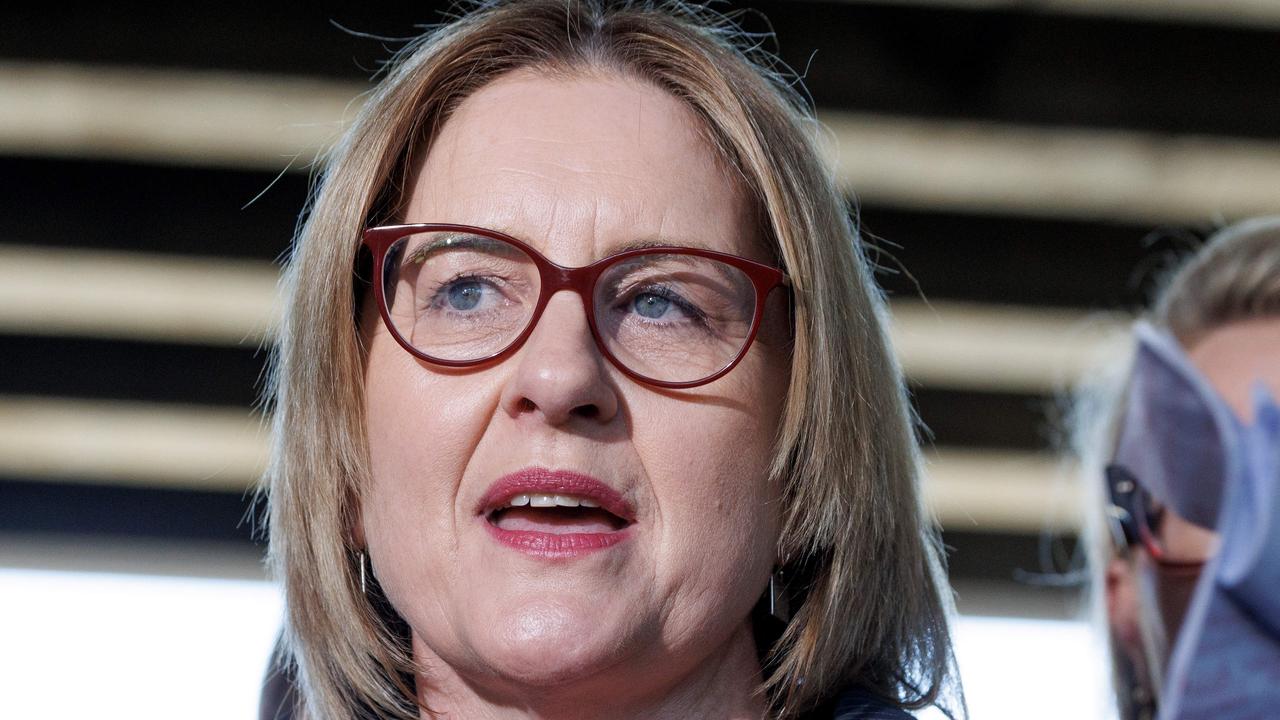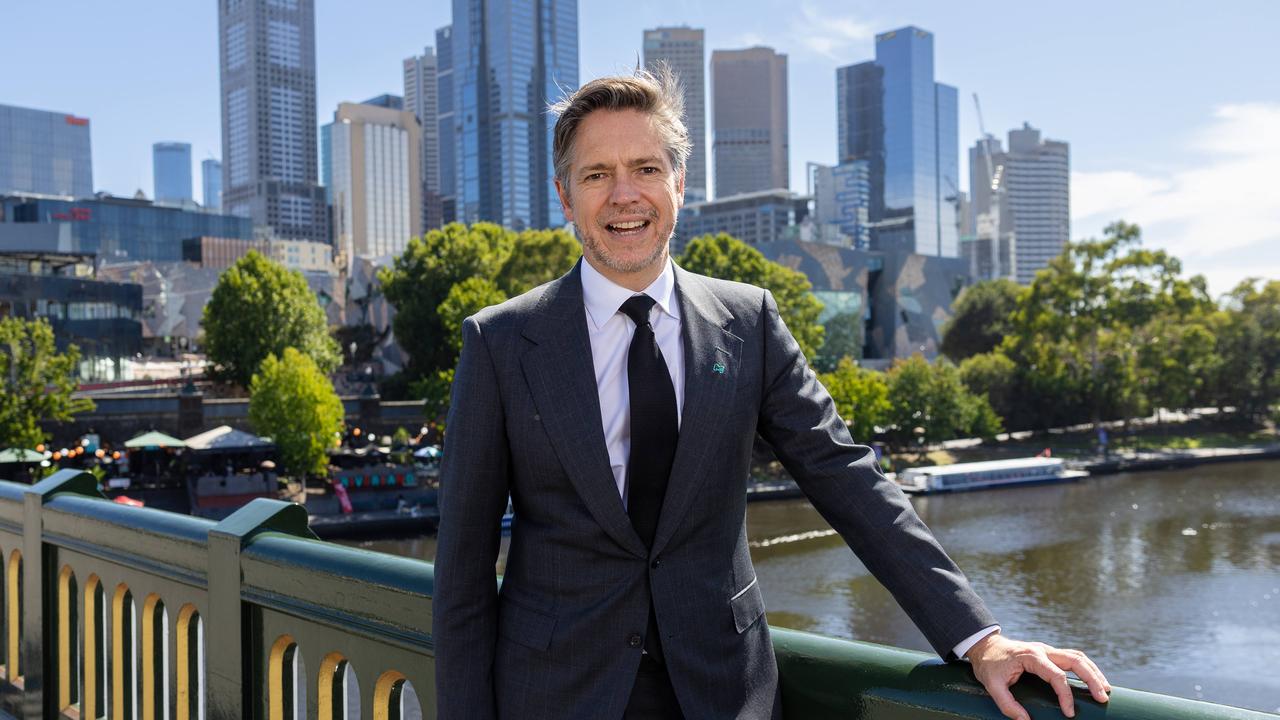How Mallacoota bushfire survivors are coping three years after Black Summer tragedy
Three years after megafires tore through Mallacoota, the trauma still haunts many — while others are still waiting for their homes to be rebuilt.
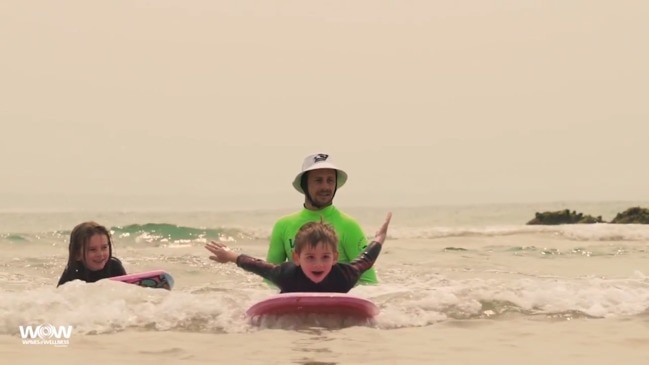
Victoria
Don't miss out on the headlines from Victoria. Followed categories will be added to My News.
The horrific megafires that consumed large parts of the nation during the summer of 2019-20 will be forever etched into the minds of Australians.
Dubbed the Black Summer bushfires, the tragedy saw more than 24 million hectares burned, an estimated billion animals killed, 33 lives lost nationwide and almost 450 more affected by smoke inhalation.
Since then the world has lived through a pandemic, severe flooding and other significant cultural events such as the Queen’s death.
But for the people of Mallacoota and other hard hit towns they continue to deal with the devastation of the awful events, three years on.
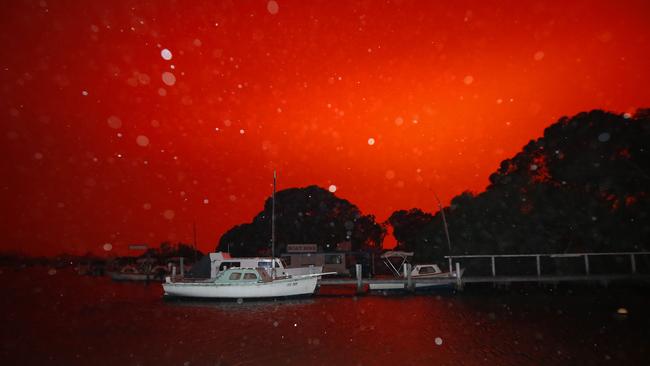
Laura Langmead, longtime holiday-maker
It has been three years since Black Summer bushfire survivor Laura Langmead held a mask to her daughter Evie’s face as the one-year-old struggled to breathe.
The mother-of-two was holidaying at Mallacoota with husband Niall, then three-year-old son Mack, and one-year-old daughter Evie, when a wall of fire threatened almost 1300 residents and thousands more visitors.
Amid the apocalyptic scenes, Herald Sun photographer David Caird captured the moments Mrs Langmead shielded little Evie’s face from the thick smoke blanketing the air.
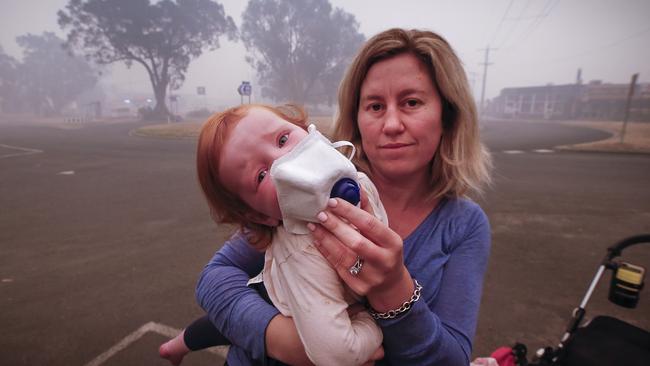
Mr Caird stumbled upon the pair walking through Main St, near the community centre turned evacuation centre, the day after the fires ripped through Mallacoota.
The family remained in town for another five days before they were evacuated and able to return home safely to their loved ones.
It was featured on the front page of the newspaper and beamed across the world, helping inform millions of the catastrophic events which devastated the East Gippsland region.
But since the terrifying experience, the family have made it a priority to return Mallacoota every holiday season.
Mrs Langmead said they were driven by a “sense of duty” to support the community as it continues to rebuild.
“Mallacoota doesn’t have any bad memories. What happened was a tragedy but its people are resilient,” she said.
“We talk about it every now and then, it helps that we go back there. We try to keep communication open and talk about it.”
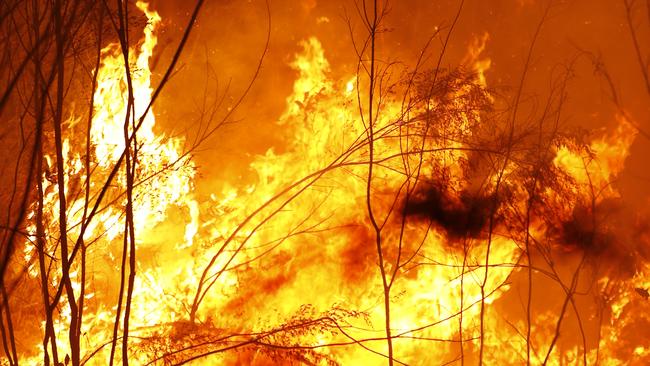
Mrs Langmead, who “fell in love” with the Mallacoota 13 years ago, said the town deserved to be known for more than the horror bushfire season.
“The first time we visited, we actually just had friends staying there and we wanted somewhere to go – we’d just gotten engaged and we went there and had such a wonderful time,” she said.
“We thought we’d go again the following year, but now it’s become a family tradition and we go every year with four other families.”
She said Evie was too young to remember the horror bushfires but her older brother had displayed eight of the ten signs of PTSD in the aftermath.
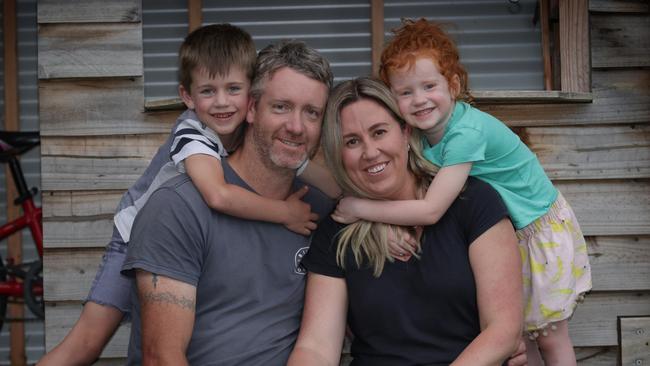
Despite having to navigate a pandemic since, she said their family was “doing well”.
“We’re your average Aussie family. My husband’s working as an electrician, Mac finished his first year of school and Evie just finished three-year-old kinder,” she said.
But she said she’d never forget just how scary things got three years ago.
Much of family’s time was spent hunkered down in the community centre packed alongside residents and tourists as vicious flames tore through more than 100 homes and businesses.
“I couldn’t tell you how many young families and elderly people were squeezed in there. It was very intense,” Mrs Langmead said.
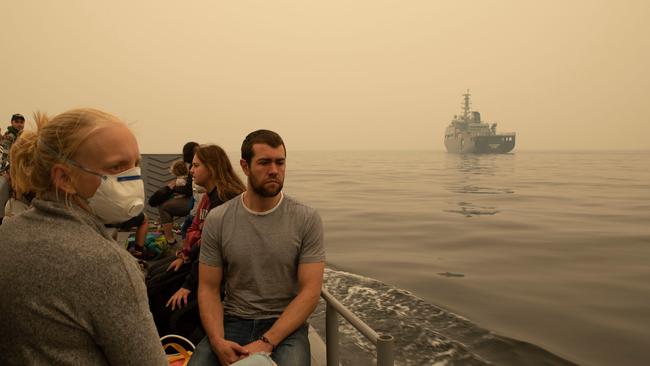
Others sought refuge on the jetty, prepared to enter the lake as a last resort as skies blackened with smoke and the nearby fire front cast an eerie shade of blood red over the town.
She said at one point her husband, who had lost everything in the Black Saturday fires ten years earlier, told her to call her family to say goodbye.
“He was trying to remain cool, calm and collect for me and our kids, but there was a moment where he told me you need to call your family and say I hope I see you again, that was excruciating,” she said.
“The hardest part was that it was all unfolding on national television and our families were at home watching it. We were in the community centre and had to turn off our phones so we couldn’t even communicate with them.”
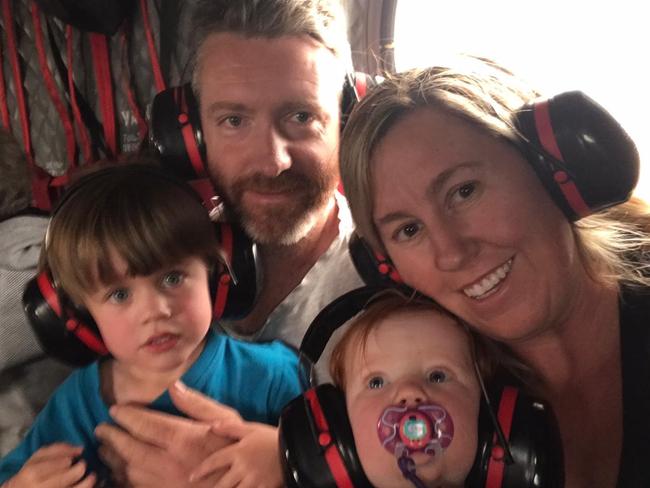
Mack also had a history of croup and needed a 24-hour medical stay on the Australian Defence Force barge.
“He was really struggling at one point. The army met us down at Bastion Point and put us on an army speedboat,” she said.
“Almost like a crane hooked to us and lifted us up to the barge where we stayed for 24 hours just to get him some attention. It felt like a scene out of James Bond.”
The Langmeads were successfully evacuated on their third attempt by a Japanese Chinook helicopter to a nearby air force space at Sale.
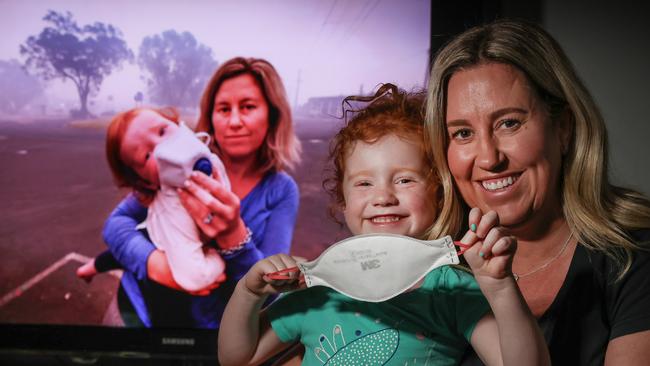
“It was really emotional experience. The Red Cross were just waiting with open arms for us and we had a very emotional reunion with families at a nearby sports centre,” Mrs Langmead said.
“It was very overwhelming. You kind of go from having to say goodbye on the phone, not sure of what might happen.”
The foursome, who lost their car and caravan, then felt incredibly grateful to be able to return to their Ferntree Gully home.
“I had such a heavy heart and for the people stuck there. To be able to return home, we felt very lucky,” she said.
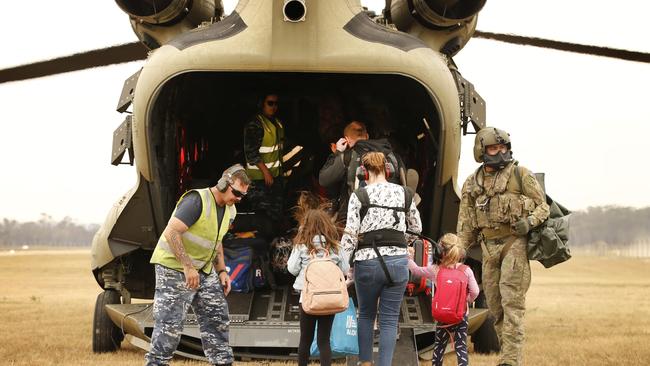
Jann Gilbert, resident
Jann Gilbert shifted her life down to the quaint coastal town of Mallacoota from Byron Bay in December 2018 wanting more peace and quiet.
Little more than a year later – only 11 days before the Mallacoota fires – she finished renovating her single-storey unit near Bastion Point.
But like so many homes and businesses in the popular tourist hotspot, 520km east of Melbourne, the refurbished property was reduced to char by the megafires.
Three years on, Ms Gilbert and her beloved pooch Ollie are still waiting for the rebuild to finish.
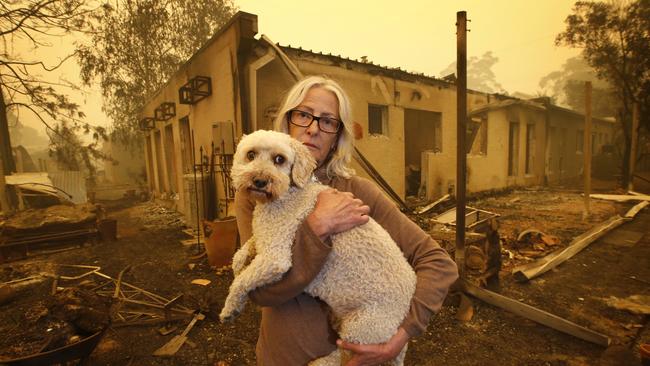
Extensive lockdowns, resource shortages and a lack of workers have delayed the process.
The psychological scars of that time also linger.
“You’re never the same after living through a climate disaster, there’s a loss of innocence,” Ms Gilbert told the Herald Sun.
“I think the floods this year have brought back a lot of trauma.
“I notice I’m on edge and a bit grumpy at the moment, I’m basically waiting for the next shoe to fall, I think we’ve got all PTSD here.
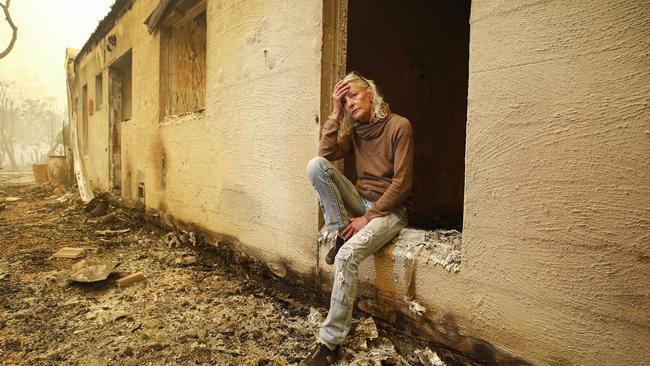
“Lots of people have breathing problems still. We didn’t see the sun for 16 days – it looked like the apocalypse.”
Reflecting upon on the disaster, Ms Gilbert shared the moment she first realised how dire the situation was.
“When everything went pitch black at 7am, that was the first ‘Oh my God’ moment, she said.”
“Then when the fire was burning down toward the lake; that was probably more frightening because our place of last resort was in the lake.
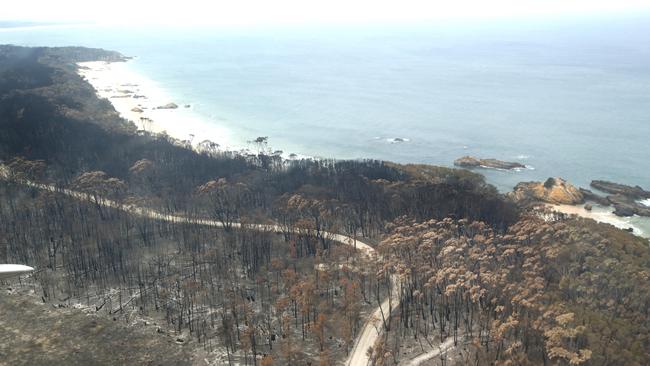
“There was lots of animals down at the wharf. One of the things I noticed, all the dogs knew something was going but they were all really calm, they didn’t bark at anything.”
Mallacoota quickly made international headlines in the days following when the Australian Defence Force evacuated 1305 people, 162 dogs, one rabbit and one parakeet on the HMAS Choules.
It would become the largest maritime evacuation in Australian history.
Ms Gilbert and Ollie were forced to uproot their lives six times in the aftermath – even briefly relocating back to northern NSW.
“After the fires, there was no accommodation here,” she said.
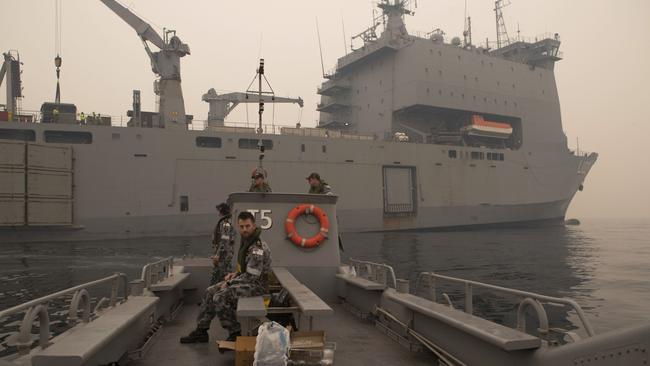
“Emergency Recovery Victoria eventually got together a scheme where you could get temporary modular housing.”
She has resided in the emergency relief housing on a block of land which was leased around Easter 2021 and expects the rebuild of her unit to be complete by March.
“It’s just awful not knowing where you’re going to go next.
“There’s quite a few waiting for their homes to be done too, though this year a lot more building has started. There’s less vacant blocks than there was.
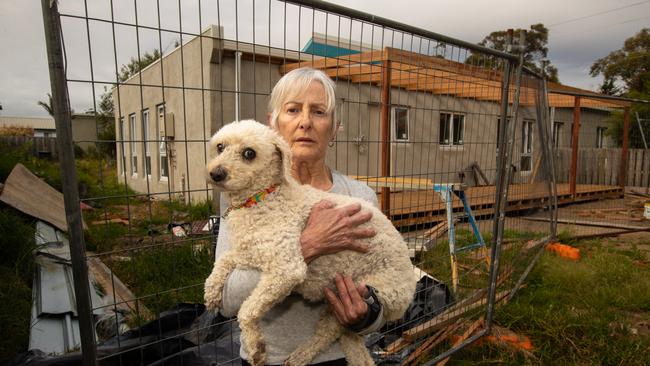
“Quite a few people have decided to sell or not rebuild.”
Tourists visiting over the holidays should remember that Mallacoota’s residents were still doing it tough, Ms Gilbert said.
“There are whole families have been coming for generations – they’re lovely,” she said.
“But there are some people who need to be more respectful, they treat the place like their own private little island.”
“I’m surprised people still come here and let off fireworks on New Year’s Eve. There’s a lot of people here who are triggered by any loud noises after all the gas bottles exploding.
“I don’t like when people come here and have no respect for the fact that we’ve been traumatised. If you do come here, then care about it. Don’t be exploitative.”




